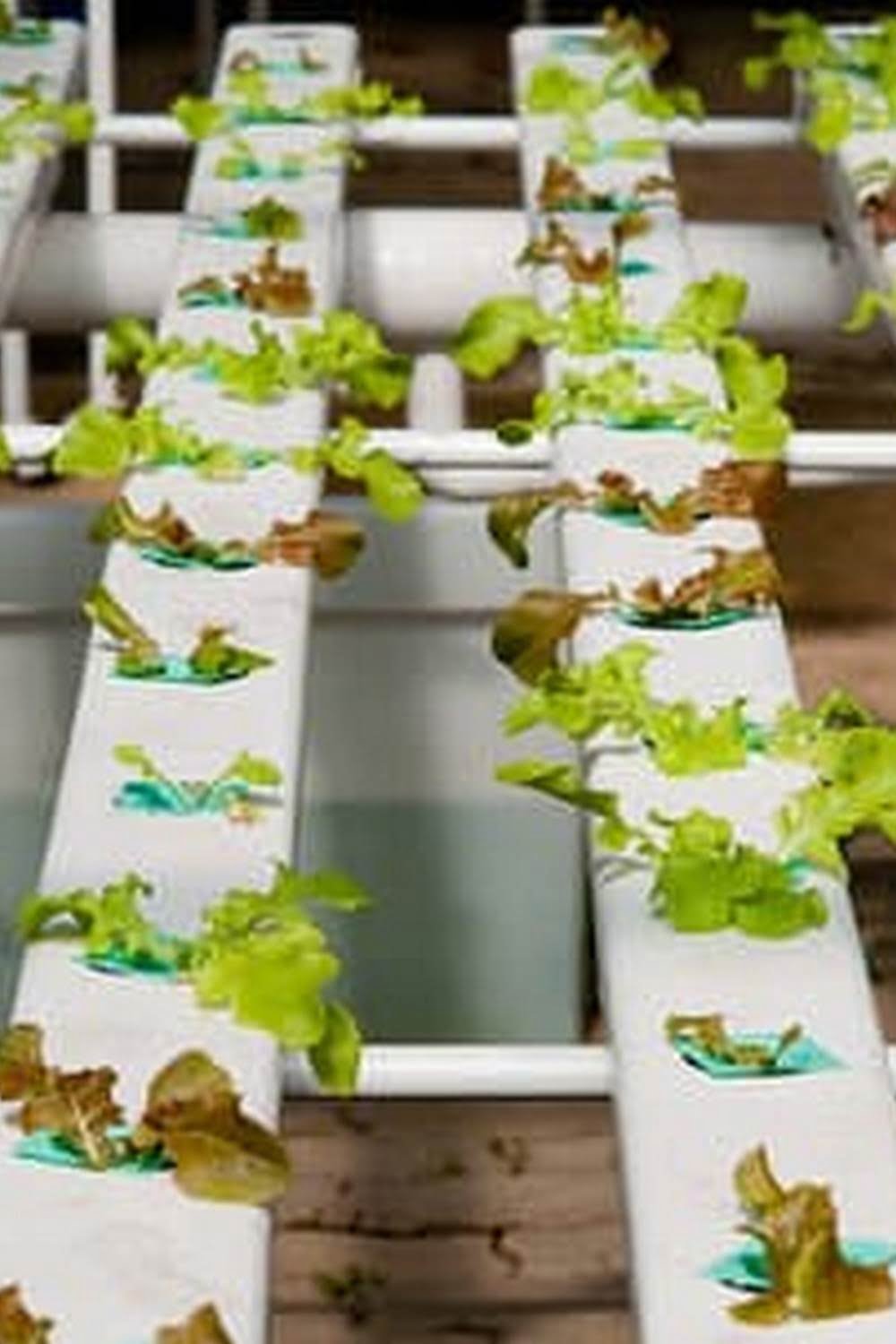Introduction
Growing a vegetable garden with hardware cloth is a great way to create an abundant and healthy home garden. There are many advantages to using hardware cloth when constructing a vegetable garden, as this type of fencing material offers exceptional protection against animals that may be tempted to enjoy the gardens produce. Not only is it an effective form of pest control, it can also add strength and stability to raised plants boxes and other forms of gardening enclosures. In addition, because it allows water to penetrate through its mesh pattern, it can be used in situations where traditional wood framing prevented irrigation from reaching the soil.
Aside from animal protection and greater irrigation capabilities, many people appreciate that hardware cloth provides superior drainage to any soil-based garden bed. The holes allow water to pass through quickly preventing standing water from forming around (or in) the garden area. Furthermore, the rigid structure of steel mesh creates a sturdier framework than typical fencing materials, making it less prone to bending or shifting due to environmental conditions like windy weather or snowfall weight. Its increased strength also enables a more reliable boundary line where gaps at bottom of fencing will not occur over time due to impact on ground surface caused by normal wear-and-tear of weather elements – further alleviating concerns about potential intrusions into the vegetable garden area by wild animals or rodents. Finally, since galvanized steel material may last up to 20 years in outdoor use, when properly maintained its high durability guarantees maintenance-free protection for your home grown vegetables for an extended period of time!
Advantages of Using Hardware Cloth
Hardware cloth is becoming an increasingly popular material used to create vegetable gardens. The main advantages of using hardware cloth for a vegetable garden include its durability, flexibility, and cost efficiency. Durability is one of the key reasons why hardware cloth is gaining in popularity. It will last longer than most regular landscape fabrics and won’t need to be replaced as often. In addition to its durability, hardware cloth is also highly flexible, meaning it can easily be shaped or contoured to fit into any size or shape desired. This offers more freedom when designing your vegetable garden bed. Furthermore, because it’s made of mesh wire, it won’t break down as quickly over time compared to other materials such as plastic or fabric. Lastly, due to its lower cost and its versatility in form and design, using hardware cloth is also a very cost effective way to build your vegetable garden.
Types of Hardware Cloth
Hardware cloth is a versatile material often used in vegetable gardens. It is a sturdy, corrosion-resistant mesh made up of grid wires or vinyl strips that can be used to keep out pests as well as provide physical support for plants. Hardware cloth is available in various wire materials and sizes, so there’s an option for any need.
Stainless steel hardware cloth is the most durable option, but it can also be one the most expensive. This type offers excellent rust and corrosion resistance, however its cost may limit its practicality for larger vegetable garden applications. Aluminum hardware cloth offers medium grade protection at mid-range prices, and it comes in both vinyl and regular options. Vinyl coated aluminum screens are available for critical applications with even greater protection against weather elements than traditional aluminum screens. PVC coated wire mesh also provides excellent rust protection with galvanized core wires; however, this type may be more prone to sagging over time if not supported properly.
How to Set Up Your Hardware Cloth Vegetable Garden
Drawing a Plan: It is important to begin the process of setting up your hardware cloth vegetable garden with a clear plan. This will consist of measuring the area you intend to use for the garden and then drawing a plan that includes where each item should go (such as spacing between vegetables, picking out fabric patterns, or planting orientation).
Prepping the Ground: Preparing the area of ground for your vegetable garden is also an important part of this process. You will want to clear away any weeds and debris, rake the soil flat, and create any desired pathways or terraces. If adding compost or natural fertilizer, now it is time to do so. Finally, water your patch of soil well in order to promote good drainage and help your vegetables grow strongly.
Installing Fabric: Now you are ready to install the fabric! Unroll it over the entire space you have prepared and cut it to shape if necessary; ensure that there are no sharp edges or tears left in fabric after cutting. Once secured, anchor down securely by laying stones along perimeter and filling center with mulch. This prevents wind from taking it up while allowing strength to keep unwanted critters outside your garden space.
Adding Vegetables: Now it’s time to add your selected vegetables! Depending on what you’ve chosen for your garden there may be specific instructions about planting given on seed packets; if not follow general guideline of planting seeds at twice their width when covered with soil for best results and earliest growths possible. Finally place an appropriate netting above plants (depending on type) which safely extends harvest season longer than without protection from hungry bird visitors!
Different Ways to Secure the Hardware Cloth
There are several ways to secure the hardware cloth when creating a vegetable garden. Nails can be used by hammering galvanized nails at least 2 inches wide around the perimeter of the hardware cloth and buried in the ground, ensuring that only the head protrudes. Adhesive such as silicone-based or liquid barge cement can be used to adhere and bond the mesh to your chosen substrate, such as wood or brick. You may also choose to employ screws with washers for added strength and grip, making sure that no sharp edges remain on any of their exposed ends. Bolts and clips can also be employed for added security (along with nuts if necessary). If you prefer not to drill into walls or other substrate, electrician’s tape or plastic zip ties are an easy way to secure each corner of the mesh together. For extra safety and weather protection, outdoor fabric stapler guns give great results when securing hardware cloth to wooden frames.
Maintenance Tips for Your Hardware Cloth Garden
Mulch Placement: To help keep moisture levels in the soil consistent, a layer of mulch should be applied around the growing area. This will also help to cut down on weeds. Depending on the type of mulch used, it’s important to check that the soil underneath is still getting enough air and sun access.
Pest Control: Making sure there are no pests present in your garden will help ensure healthy growth for your plants. Regular inspection for aphids and other insects that may be causing damage can be done with tools such as magnifying glasses. Set up traps if necessary and take appropriate measures indicated by your local extension agent or nursery.
Regular Pruning: If your garden is composed of any types of annuals (such as tomatoes), pruning may be necessary at regular intervals throughout the season for optimum growth. Make sure not to over prune, as this can stunt growth. When pruning, use sharp garden scissors or snips to give clean cuts which will heal better and reduce potential disease risks when compared to blunt edges or tears made by hand-held shears or pliers.
Watering: Proper watering ranges depending on the types of vegetables planted in your hardware cloth vegetable garden as well as according to region and seasonal temperature fluctuations, but most vegetables require 1-2 inches of water per week — either through natural rainfall or man-made irrigation systems — so remember to keep an eye on the moisture content of your soil regularly (use a tool such as a moisture meter) so prevent drought stress from occurring in especially hot weather conditions.
The Benefits of Growing a Vegetable Garden with Hardware Cloth
Growing a vegetable garden with hardware cloth offers numerous benefits to anyone looking to improve their yield and provide safe produce. Firstly, using this mesh fabric means that your crops are at minimal risk from large predators such as birds and other animals. Additionally, it provides ventilation and allows better water circulation which strengthens plant roots by preventing overheating and flooding. It also helps improve soil structure by facilitating the mixing of organic matter, which leads to healthier soil and happier plants! In terms of its durability, hardware cloth is made of high quality materials making it highly resistant to corrosion and certain chemicals, ensuring that your vegetable garden lasts for many years! It’s also easy to install due to its light weight, meaning that you can make use of it comparatively quickly. Last but not least, hardware cloth helps protect veggies from pests like insects or unexpected weather conditions like hail or strong winds – another feather in the cap for those hoping for a successful harvest season. All in all, hardware cloth makes it easier for gardeners to cultivate healthy vegetables with fewer losses due to unpredictable events.

If you’re looking to get into vegetable gardening, or are just looking for some tips on how to make your current garden better, then you’ve come to the right place! My name is Ethel and I have been gardening for years. In this blog, I’m going to share with you some of my best tips on how to create a successful vegetable garden.





